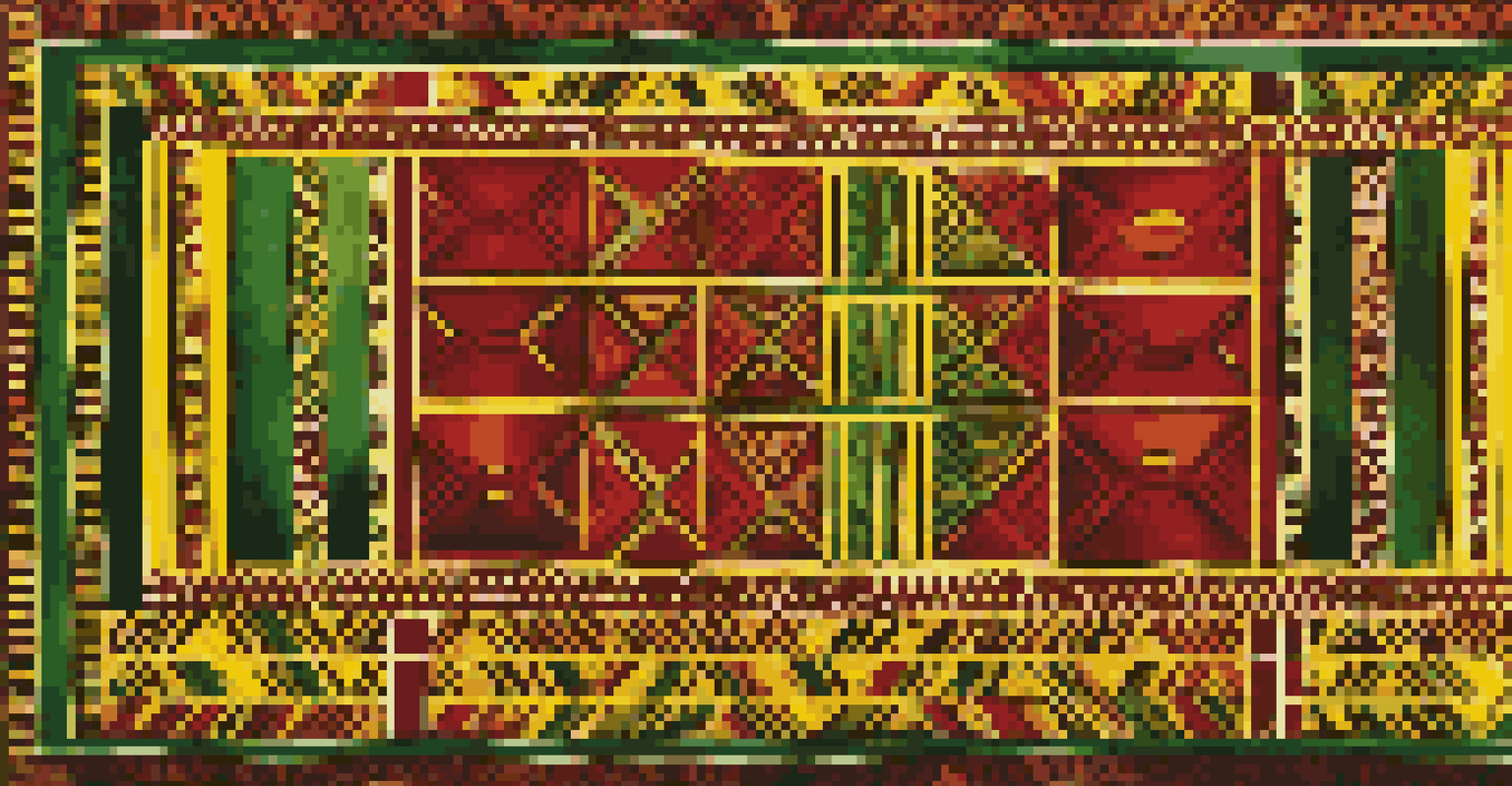The Role of Color in Cultural Identity and Artistic Expression

Understanding Color's Psychological Impact
Colors evoke emotions and can influence our perceptions in profound ways. For instance, red often symbolizes passion or danger, while blue can evoke calmness and tranquility. This psychological impact of color plays a foundational role in how cultures express their identity through art.
Color is the keyboard, the eyes are the harmonies, the soul is the piano with many strings.
When artists choose specific colors, they are not just being decorative; they are telling a story and conveying deeper meanings. Take the vibrant colors in African textiles, which often represent community, heritage, and spiritual beliefs. This intentional use of color serves as a powerful tool for cultural storytelling.
Ultimately, understanding the psychological facets of color can help us appreciate the complexity of artistic expression across different cultures. It invites us to see beyond the surface and consider the emotions and meanings that colors can represent.
Cultural Symbolism of Colors Across the Globe
Colors hold different meanings in various cultures, making them a rich field for exploration. For example, while white is often associated with purity in Western cultures, it signifies mourning in some Eastern cultures. This duality highlights how color can be a powerful symbol of cultural identity.

In India, the color saffron is not only prominent in religious contexts but also represents courage and sacrifice. Similarly, in Mexico, the vibrant use of colors in festivals reflects a deep celebration of life and death, illustrating the complexity of cultural narratives.
Colors Shape Emotional Perceptions
Colors evoke emotions and convey deeper meanings, influencing how cultures express their identities through art.
By understanding these cultural significances, we can gain a more profound appreciation for how communities use color to express their values, beliefs, and histories. It emphasizes the importance of context in interpreting artistic expression.
The Connection Between Color and National Identity
National flags often incorporate colors that reflect a country's history and values. For example, the red, white, and blue of the United States flag symbolize bravery, purity, and justice, respectively. This use of color helps to unify citizens under a common identity.
Colors are the smiles of nature.
Many countries have colors that are deeply associated with their cultural heritage. The green in the Irish flag symbolizes the Catholic population, while the orange represents the Protestant population, showcasing the historical tensions and reconciliations within the nation.
Thus, color not only adds visual appeal but also plays a crucial role in fostering a sense of belonging and national pride. It serves as a reminder of the shared experiences and collective identity of a nation.
Color in Traditional and Contemporary Art Forms
Traditional art forms across cultures often utilize color to convey stories and themes. For example, in Japanese woodblock prints, subtle colors are used to depict seasonal changes, reflecting a deep connection with nature. This traditional use of color also informs contemporary artists who draw inspiration from their cultural backgrounds.
Contemporary artists, however, often experiment with color in innovative ways, using it to challenge perceptions and provoke thought. Artists like Yayoi Kusama use bold colors to express themes of infinity and self-obliteration, showcasing how color can transcend cultural boundaries.
Cultural Significance of Colors
Colors hold different meanings across cultures, reflecting values, beliefs, and historical narratives.
This blending of traditional and contemporary approaches highlights the evolving nature of artistic expression. It demonstrates how artists continue to use color as a vital element, bridging the past with the present.
The Role of Color in Fashion as Cultural Expression
Fashion is another realm where color plays a pivotal role in cultural identity. Designers often draw from cultural palettes to create collections that resonate with their heritage. For instance, the use of bright colors and patterns in traditional African attire not only showcases beauty but also tells stories of community and history.
Moreover, fashion weeks around the world often highlight color trends that reflect societal moods and cultural shifts. The Pantone Color Institute, for example, announces a 'Color of the Year' that influences global fashion and design, showcasing how color can reflect collective sentiments.
In this way, color in fashion serves as both a personal and cultural expression, allowing individuals to connect with their roots while also engaging with global trends. It's a beautiful dance of tradition and modernity.
Color and Its Influence on Social Movements
Colors have been used strategically in social movements to convey messages and unite people. Take the pink of the Women's March, which became a symbol of solidarity and empowerment. This use of color not only draws attention but also fosters a sense of belonging among participants.
Similarly, the rainbow flag represents LGBTQ+ pride and diversity, embodying the fight for equality and representation. Each color in the flag has its own significance, contributing to a broader narrative of inclusivity and acceptance.
Color as a Tool for Social Change
Colors are strategically used in social movements, uniting people and conveying powerful messages of solidarity.
Thus, color transcends the aesthetic; it becomes a rallying point for social change. It harnesses the power of visual identity to inspire action and foster community among those who embrace a common cause.
The Future of Color in Cultural and Artistic Landscapes
As our world becomes increasingly interconnected, the role of color in cultural identity and artistic expression continues to evolve. Artists are now blending influences from various cultures, creating unique palettes that redefine traditional meanings. This fusion can lead to exciting new forms of expression that resonate with diverse audiences.
Furthermore, advancements in technology allow for innovative uses of color in digital art and design. Artists can experiment with color in ways previously unimaginable, pushing the boundaries of creativity and expression.

Looking ahead, the future of color in art and culture promises to be vibrant and dynamic. It will continue to reflect the ongoing dialogues between identity, emotion, and community, reminding us of the universal language that color speaks.